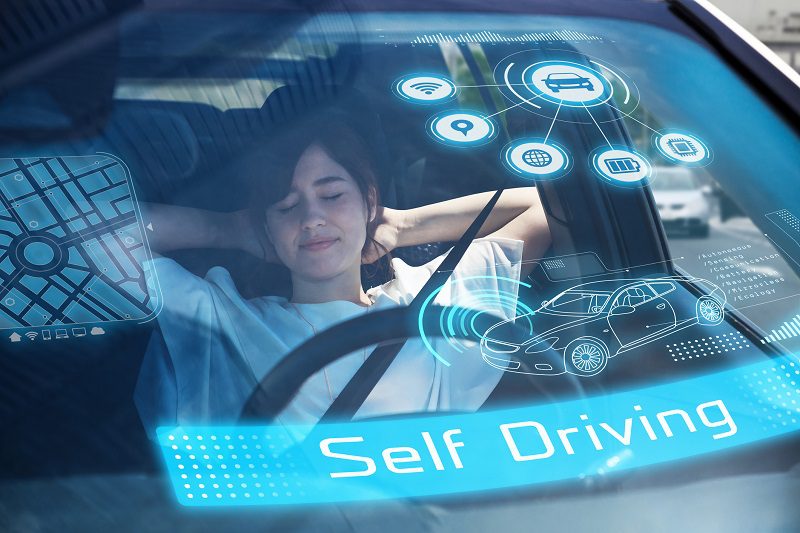Regulations for insuring self-driving cars required sooner rather than later, lawyers say

Canada is not ready to insure even partially automated vehicles (AVs), but the move towards fully-automated vehicles could be here by as early as 2026, warn lawyers at Borden Ladner Gervais LLP.
Provincial legislatures will therefore need to update their insurance laws and regulations as soon as possible to avoid pending confusion.
“Canada will need to address potential disruption that AVs may cause from an insurance perspective,” Marin Leci and Stéphanie Gagné write in their article for Mondaq. “Current legislation does not adequately consider accidents involving Level 3 automation and will likely fail to address considerations around even higher levels of autonomy. While the Insurance Bureau of Canada recommends a single policy approach, provinces and territories have jurisdiction to develop highway traffic laws and insurance legislation covering property….
“Given that insurance legislation and case law is complex, the sooner provincial legislatures can update applicable insurance legislation to account for risks associated with AVs, the less impactful increasing levels of autonomy will be on courts and both private and public insurance programs.”
There are 5 levels of vehicle automation, with zero being no automation and Level 5 representing fully-automated, self-driving cars.
Currently, Level 4 vehicles in existence are geared toward ride-sharing, and are often seen in delivery vehicles and robo-taxis, Leci and Gagné observe. So far, they are only allowed to travel within specific, geo-fenced areas. Ontario is the only jurisdiction in Canada that has allowed testing of Level 4 technology on its roads.
Level 3 vehicles have environmental detection capabilities and can make informed decisions for themselves, such as accelerating past slow-moving vehicles, but they still require a human override. The driver must remain alert and ready to take control if the system is unable to execute the task.
As it stands, as far as updating insurance laws and regulations for AVs, Canadian provinces still aren’t up to the task of dealing with Level 3 technology yet, the authors say.
In a worst-case scenario, Level 4 AV technology might be ready before Level 3 insurance regulation amendments are ready, the authors note in a 2021 article on a similar topic.
“When technology is in use before regulatory support is in place, everyone is impacted,” they wrote in 2021. “Regulators will likely scramble to update provincial traffic and insurance acts, with pressure for quick passage into law — meaning national harmonization is unlikely.
“Insurers may take off cover positions, resulting in uninsured losses for owners and operators of vehicles. Manufacturers of vehicles and autonomous technology may find themselves subject to increasing numbers of claims from individuals whose insurance doesn’t cover losses following an accident.”
To prevent exactly this type of regulatory patchwork chaos from happening, Insurance Bureau of Canada in 2018 recommended a single insurance policy if automated vehicles are involved in collisions.
“Regardless of whether the driver or automated technology is responsible, an injured person would pursue a claim directly against the automated vehicle’s insurer,” IBC proposed in its report, Auto Insurance for Automated Vehicles: Preparing for the Future of Mobility.
“If the automated technology caused the collision, the insurer would compensate anyone injured, including the person in the driver’s seat of the automated vehicle. After compensating the injured people, the insurer would have a right to recover liability payments from the party responsible for the collision, such as the vehicle manufacturer or the technology provider.”
Some in the P&C insurance industry see automated cars as a precursor to a major shift from selling auto insurance to selling product liability insurance, since drivers would have more of a claim against the manufacturers of faulty, fully-automated cars. This proposal to handle the claim in one policy would mean those injured in an accident wouldn’t have to wait to receive funds to benefit recovery for as long as it takes product liability cases to roll out in the courts, which can take years.
That said, as the authors note, provinces have exclusive jurisdiction over their own auto insurance legislative schemes. “This could leave Canada with a confusing patchwork of motor vehicle insurance regulations and liability across the country,” they write.
The issue of how to insure AVs is going to come to a head soon, Leci and Gagné predict.
“AV sector analysts predict that this decade will lay the groundwork for what analysts expect will turn into a market of some 30 million driverless cars by 2040,” they write.
Competition in the AV sector post-COVID is driving this analysis, they add. “Software developers, automobile manufacturers and suppliers expect that there will be early, albeit limited, Level 4 AV use on public roads as early as 2023. They also expect robo-taxis could begin operating as early as 2026.”
Feature image courtesy of iStock.com/metamorworks



